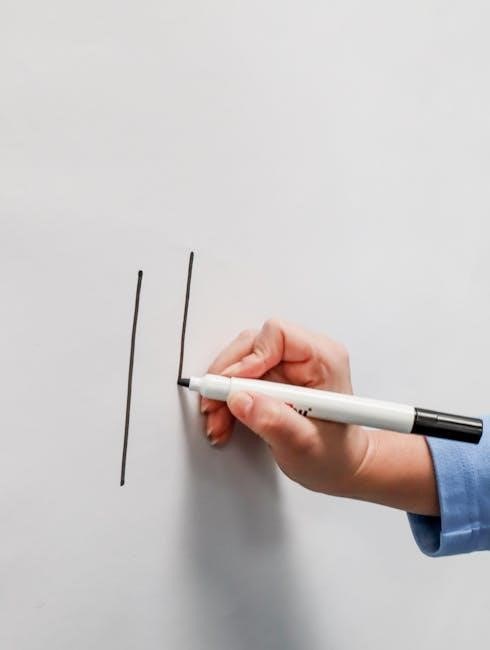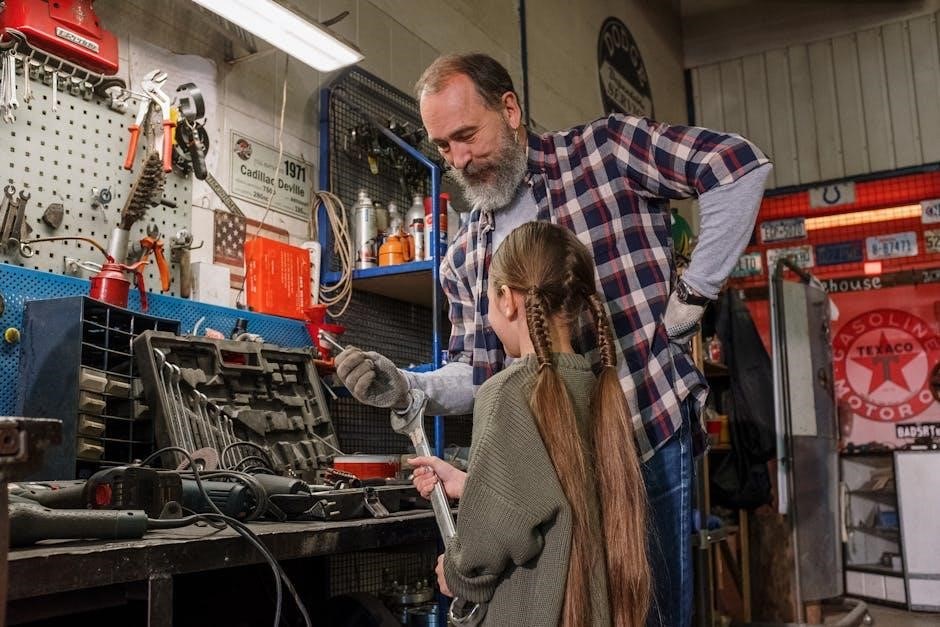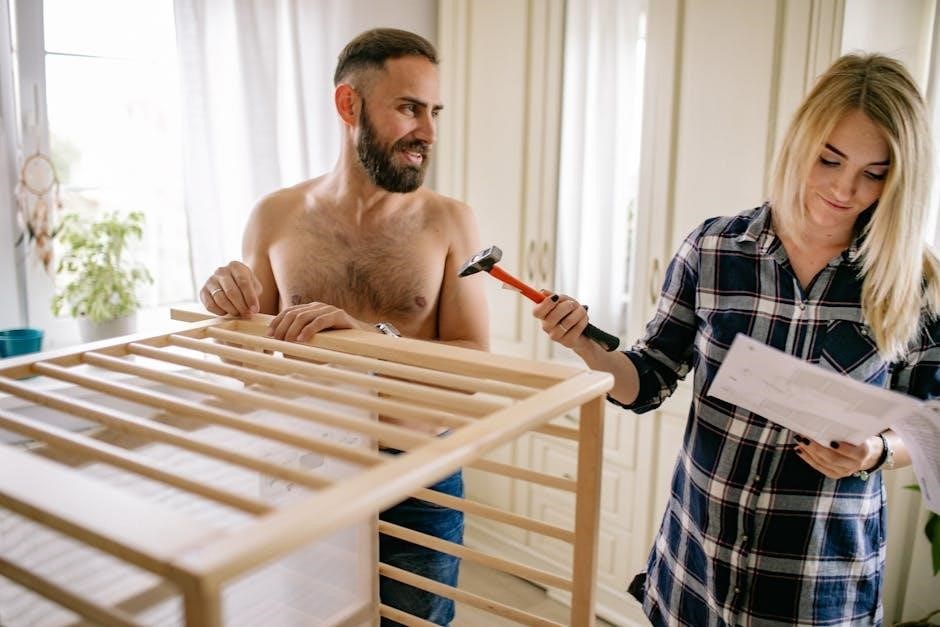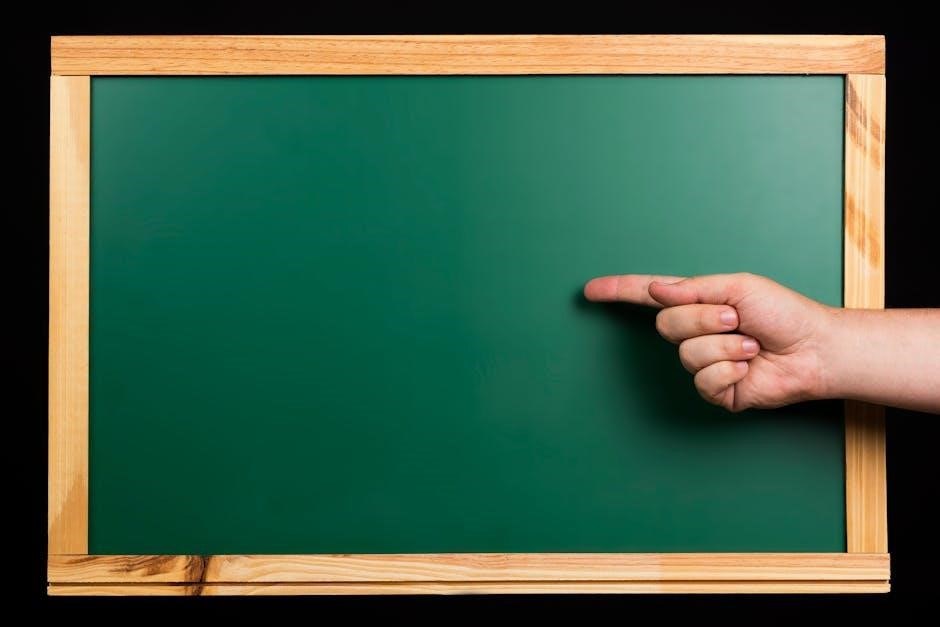
The Juki DDL-8700 is a robust, single-needle straight-stitch sewing machine designed for heavy-duty use. Ideal for professionals, it offers durability and precision, making it a top choice for industrial sewing needs.
Overview of the Juki DDL-8700
The Juki DDL-8700 is a high-performance, single-needle, straight-stitch sewing machine designed for industrial and professional use. It is renowned for its durability, precision, and reliability, making it a favorite in apparel manufacturing. The machine features a robust construction, ensuring consistent performance even in demanding environments. Its user-friendly design allows for easy operation, while advanced features like customizable stitch settings and automatic lubrication enhance efficiency. The DDL-8700 is ideal for heavy-duty tasks, offering superior stitch quality and versatility. Regular maintenance, such as oil adjustments and cleaning, is essential to maintain its optimal performance. With its powerful motor and precise control, the Juki DDL-8700 is a trusted tool for professionals seeking high-quality results in industrial sewing applications.
Key Features and Benefits
The Juki DDL-8700 boasts a range of features that make it a top choice for industrial sewing. Its single-needle, straight-stitch design ensures precise and consistent results, while the heavy-duty construction withstands demanding workloads. The machine includes a synchronized presser foot mechanism, which operates smoothly with the knee lifter for effortless fabric control. Automatic lubrication reduces maintenance needs, and the adjustable stitch length allows for customization to suit various fabrics. With a powerful motor and high sewing speed, the DDL-8700 delivers efficient performance. Additional features like reverse stitching and a built-in bobbin winder enhance functionality. Its durability, combined with user-friendly operation, makes it ideal for professionals seeking reliable and high-quality sewing solutions.
Importance of the Instruction Manual
The instruction manual is essential for maximizing the performance and longevity of the Juki DDL-8700. It provides detailed guidance on installation, operation, and maintenance, ensuring users understand the machine’s capabilities and limitations. The manual outlines safety precautions, helping operators avoid accidents and maintain a secure working environment. It also covers lubrication requirements, such as using Juki Machine Oil 7 or New Defrix Oil No. 1, which are crucial for smooth operation. By following the manual, users can troubleshoot common issues and perform routine servicing, extending the machine’s lifespan. Additionally, it explains how to install components like the under cover and knee lifter, ensuring proper setup and functionality. Adhering to the manual’s instructions is vital for optimal sewing results and machine durability.

Safety Precautions and Guidelines
Always wear protective gear and avoid loose clothing near moving parts. Keep the work area clean and well-lit to prevent accidents. Adhere to manual guidelines for safe operation.
General Safety Tips for Sewing Machines

Operating the Juki DDL-8700 requires attention to safety to prevent accidents. Always keep loose clothing and long hair tied back, and avoid wearing jewelry that could get caught in moving parts. Ensure the work area is clean, dry, and well-lit to maintain clear visibility. Never leave the machine unattended while it is in operation, and keep children and pets away. Avoid distractions, such as using a phone, while sewing. Always unplug the machine when not in use or during maintenance. Regularly inspect the machine for worn or damaged parts and replace them promptly. Follow the instruction manual’s guidelines for proper setup and operation to ensure safe and efficient use.
Handling Machine Parts Safely
When working with the Juki DDL-8700, always handle machine parts with care to avoid damage or injury. Wear protective gloves and eyewear when installing or adjusting components like the under cover, belt cover, or presser foot. Ensure all parts are securely tightened to prevent loosening during operation. Avoid using excessive force, as this may damage delicate mechanisms. When handling sharp components, such as needles or cutting tools, exercise extreme caution to prevent cuts. Keep fingers away from moving parts, including the needle bar and hook, as they can cause serious harm. Use the correct tools provided for adjustments to avoid stripping screws or damaging surfaces. Never touch electrical components with wet hands or while standing on a damp surface. Always refer to the instruction manual for proper handling techniques.
Electrical Safety Measures
To ensure safe operation of the Juki DDL-8700, adhere to electrical safety guidelines. Always plug the machine into a grounded electrical outlet with a voltage rating matching the machine’s specifications. Avoid using damaged cords or loose connections, as they can cause electric shock. Keep the power switch and pedal sensor dry, as moisture can lead to electrical hazards. Never operate the machine in wet conditions or while standing on a damp floor. If servicing the machine, disconnect the power supply before accessing electrical components. Regularly inspect the power cord for signs of wear and replace it if necessary. Ensure the machine is properly grounded to prevent electrical accidents. Follow all safety precautions outlined in the instruction manual to maintain a safe working environment.

Installation and Setup
Begin by carefully unboxing and inspecting the Juki DDL-8700. Install the under cover and belt cover, ensuring proper alignment. Attach the knee lifter and presser foot according to instructions. Connect the power switch and pedal sensor securely. Ensure all components are fitted correctly for optimal performance.
Unboxing and Initial Inspection
Begin by carefully unboxing the Juki DDL-8700 sewing machine and verifying all components are included. Inspect the machine for any visible damage or defects. Refer to the instruction manual for a detailed list of parts and accessories. Ensure the under cover, belt cover, and bobbin winder are securely packed. Check the operation panel and pedal sensor for proper connectivity. Before proceeding with installation, confirm that all parts are in excellent condition. This step ensures a smooth setup process and prevents potential issues during operation. Proper inspection is crucial for maintaining the machine’s performance and longevity.

Installing the Under Cover and Belt Cover
To install the under cover, align it with the four corners of the machine table groove, ensuring it rests securely. Gently push it into place until it clicks. Next, attach the belt cover by positioning it over the belt mechanism and fastening it with the provided screws. Tighten firmly but avoid over-tightening, which could damage the cover. These components protect internal parts from dust and debris, ensuring smooth operation. Proper installation is essential for maintaining the machine’s efficiency and longevity. Always refer to the instruction manual for precise alignment and tightening instructions to prevent any potential misalignment or damage.
Setting Up the Knee Lifter and Presser Foot
To set up the knee lifter, first ensure the presser foot is in the lowered position. Adjust the knee lifter height so that the presser foot lifts between 10-13mm when the knee lifter is fully depressed. This ensures proper fabric handling and prevents excessive pressure. Next, attach the presser foot by aligning it with the presser foot bar and securing it firmly. Make sure it is straight and evenly aligned for consistent stitching. After installation, test the mechanism by depressing the knee lifter and observing the presser foot’s movement. Proper setup ensures smooth operation and accurate stitching. Always refer to the instruction manual for detailed alignment and adjustment guidelines to achieve optimal performance.
Connecting the Power Switch and Pedal Sensor
To connect the power switch and pedal sensor, first install the pedal sensor according to the manual’s guidelines. Ensure it is securely attached and properly aligned with the machine. Next, connect the power switch to the main control panel, making sure all wires are tightly secured. The pedal sensor controls the machine’s speed, so adjust its sensitivity to suit your sewing needs. Once connected, test the setup by pressing the pedal gently to ensure smooth operation. Proper installation ensures safe and efficient control of the machine. Always refer to the instruction manual for specific wiring diagrams and adjustment procedures to avoid electrical issues and ensure optimal performance.

Maintenance and Lubrication
Regular lubrication with Juki Machine Oil 7 is essential for smooth operation. Schedule cleaning and oil adjustments as per the manual to maintain performance and longevity.
Recommended Lubricants for the Juki DDL-8700
The Juki DDL-8700 requires specific lubricants to ensure optimal performance and longevity. Juki Machine Oil 7 (Part No.: MML007600CA) is highly recommended for general lubrication. Additionally, Juki NEW DEFRIX OIL No. 1 (Part No.: MDFRX1600C0) is suggested for hook lubrication. These oils are formulated to reduce friction and wear on moving parts, ensuring smooth operation. Always refer to the instruction manual for correct application points and quantities. Using incorrect or inferior oils may lead to machine damage or reduced efficiency. Regular lubrication is crucial for maintaining the machine’s durability and ensuring consistent stitching quality. Proper oil maintenance is a cornerstone of extending the lifespan of the Juki DDL-8700.
Oil Adjustment and Application Points
Proper oil adjustment and application are critical for the Juki DDL-8700’s smooth operation. Use Juki Machine Oil 7 (Part No.: MML007600CA) for general lubrication, applying it to key components like the hook, take-up lever, and presser foot bar. For the hook lubrication, Juki NEW DEFRIX OIL No. 1 (Part No.: MDFRX1600C0) is recommended. Refer to the instruction manual for precise application points and quantities. Over-lubrication should be avoided to prevent dust and debris accumulation. Regularly inspect and clean oil ports to ensure proper flow. Always follow the manual’s guidelines for oil adjustment to maintain optimal machine performance and extend its lifespan.
Regular Cleaning and Servicing Schedule
Regular cleaning and servicing are essential to maintain the Juki DDL-8700’s performance and longevity. Daily, clean the hook area, feed dogs, and bobbin case with a soft brush to remove lint and debris. Weekly, lubricate moving parts using Juki Machine Oil 7, ensuring smooth operation. Every 500 hours of use, replace the hook, needle bar, and other wear-prone components. Check the belt for tension and adjust if necessary. Clean the machine’s exterior with a dry cloth to prevent dust buildup. Annual servicing by a certified technician is recommended to inspect internal mechanisms and ensure proper alignment. Adhering to this schedule will prevent breakdowns and keep your machine running efficiently.
Replacing Worn or Damaged Parts
Replacing worn or damaged parts on the Juki DDL-8700 is crucial for maintaining optimal performance. Regularly inspect components like the hook, needle bar, and timing belt for signs of wear. When replacing parts, ensure they are genuine Juki products to guarantee compatibility and durability. Refer to the instruction manual for detailed disassembly and reassembly procedures. Always turn off and unplug the machine before starting repairs. Use specialized tools to avoid damaging internal mechanisms. If unsure, consult a certified technician to prevent further damage. Replacing parts promptly prevents costly repairs and ensures consistent stitching quality. Keep a stock of commonly replaced parts to minimize downtime during production.

Operating the Machine
Operating the Juki DDL-8700 involves turning it on, using the foot pedal, adjusting stitch length, managing thread tension, and utilizing the knee lifter for presser foot control efficiently.
Basic Sewing Operations and Techniques
Mastering basic sewing operations on the Juki DDL-8700 involves understanding its controls and settings. Start by properly threading the machine and winding the bobbin. Adjust the stitch length and thread tension according to the fabric type. Use the foot pedal to control sewing speed, and engage the knee lifter to raise the presser foot for easy fabric handling. For straight stitching, ensure the presser foot is lowered before starting. Always guide the fabric smoothly and maintain consistent tension to achieve professional results. Regularly check and adjust the thread take-up and hook timing for optimal performance. These fundamental techniques ensure efficient and precise sewing operations on the Juki DDL-8700.

Thread Tension Adjustment and Management
Proper thread tension is crucial for achieving consistent stitching on the Juki DDL-8700. Begin by threading the machine as outlined in the manual, ensuring the thread passes through the tension discs and take-up lever correctly. Adjust the needle thread tension by turning the dial on the machine head, tightening or loosening until the stitch is balanced. For the bobbin thread, gently pull the thread to check tension and adjust the bobbin case screw if necessary. Avoid over-tightening, as this can cause thread breakage or machine damage. Regularly inspect and clean the tension components to ensure smooth operation. Refer to the instruction manual for specific tension settings based on fabric type and thread weight.
Using the Bobbin Winder and Managing Thread
To use the bobbin winder on the Juki DDL-8700, first attach it to the machine. Thread the bobbin through the guide, ensuring it seats properly. Wind thread slowly, keeping the bobbin three-quarters full to avoid overfilling. Once wound, cut the thread and remove the bobbin. For managing thread, always use high-quality, lint-free thread suitable for industrial sewing. Regularly inspect thread for knots or tangles and replace if damaged. Store thread in a dry, cool place to prevent degradation. Proper thread management ensures smooth operation and consistent stitching. Refer to the instruction manual for specific guidelines on thread selection and winding techniques.
Troubleshooting Common Issues
Common issues with the Juki DDL-8700 often relate to thread tension, machine noise, or improper lubrication. If thread breaks frequently, check tension settings and ensure the bobbin is correctly seated. For uneven stitching, verify that the presser foot is properly aligned and the needle is in good condition. Excessive noise may indicate insufficient lubrication or misaligned parts. Consult the instruction manual for oil application points and ensure all components are clean. If the machine fails to power on, inspect the power switch and pedal connections. Regular maintenance, such as cleaning and lubricating, can prevent many of these issues. Always refer to the manual for specific troubleshooting steps and solutions.

Advanced Features and Customization

The Juki DDL-8700 offers advanced features for customization and performance optimization; Users can adjust stitch settings, optimize sewing speed, and utilize optional attachments for specialized tasks, enhancing productivity and versatility.
Customizing Stitch Settings and Patterns
The Juki DDL-8700 allows for precise customization of stitch settings and patterns to suit various sewing needs. Users can adjust stitch length and width according to fabric type and desired outcomes. The machine features a straightforward control panel for easy access to these settings, ensuring consistent and professional results. While it specializes in straight-stitch sewing, the ability to fine-tune stitches enhances versatility for different materials and projects. The instruction manual provides detailed guidance on optimizing stitch settings for specific tasks, ensuring users can achieve the best results. Additionally, optional attachments can further expand customization options, making the DDL-8700 adaptable for a wide range of industrial sewing applications.
Optimizing Sewing Speed and Performance
The Juki DDL-8700 is designed for high-speed, industrial-grade sewing, delivering consistent performance even in demanding environments. To optimize sewing speed, ensure proper thread tension, as incorrect settings can slow down operations. Regular lubrication of machine parts, as outlined in the manual, is essential for smooth functionality. The presser foot should be adjusted to suit the fabric type, preventing unnecessary resistance. Additionally, maintaining a clean workspace and avoiding clutter can enhance sewing efficiency. The machine’s robust construction minimizes vibrations, allowing for stable operation at high speeds. By following the manual’s guidelines for maintenance and setup, users can maximize the DDL-8700’s performance, ensuring fast and precise stitching across various materials and projects.
Using Optional Attachments and Accessories
The Juki DDL-8700 supports a variety of optional attachments and accessories to enhance its functionality. These include specialized presser feet for tasks like buttonholes, zippers, and edge joining, allowing for precise stitching on diverse fabrics. Additionally, the machine is compatible with a knee lifter, enabling hands-free presser foot operation for improved control when sewing large or complex materials. Optional attachments like automatic thread cutters can streamline workflow by reducing manual thread trimming. Users are advised to consult the instruction manual for proper installation and usage of these accessories to ensure optimal performance. By utilizing these optional features, operators can tailor the machine to their specific needs, maximizing efficiency and versatility in industrial sewing applications.
The Juki DDL-8700 is a reliable, high-performance sewing machine. Always follow the instruction manual for optimal use and maintenance. Explore optional attachments to enhance functionality.
Final Tips for Effective Machine Usage
For optimal performance of the Juki DDL-8700, always refer to the instruction manual for guidance. Regularly lubricate with Juki-approved oils to maintain smooth operation. Ensure proper installation of the under cover, belt cover, and knee lifter for stability. Adjust the presser foot height between 10-13mm for precise control. Avoid overloading the machine to prevent damage. Clean and service the machine frequently to remove dust and debris. Replace worn parts promptly to maintain efficiency. Explore optional attachments for enhanced functionality. By following these tips and adhering to the manual, you can maximize the machine’s lifespan and productivity. Troubleshoot common issues quickly using the manual’s guidelines for uninterrupted sewing.
Resources for Further Assistance
For detailed guidance, refer to the official Juki DDL-8700 instruction manual, available as PDF downloads from trusted sources like ABC Sewing Machine. Additional resources include the DDL-8700 INSTRUCTION BOOK and DDL-8700 OIL ADJUSTMENTS guide. Visit Juki’s official website or authorized dealers for genuine parts and accessories. Online forums and communities, such as GitHub, offer shared manuals and user experiences. For troubleshooting, consult the INSTRUCTION MANUAL or contact Juki’s customer support. Ensure to use approved lubricants like Juki Machine Oil 7 (Part No.: MML007600CA) for maintenance. These resources provide comprehensive support for optimal machine performance and longevity.